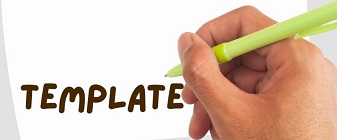An Attempt to Enhance the Social Welfare of People with Disabilities Through Creative Economy Development During the COVID-19 Pandemic (Study: Makassar City)
(1) College of Social Welfare Sciences (STIKS) Tamalanrea Makassar (STIKS) Tamalanrea Makassar
(2) College of Social Welfare Sciences (STIKS) Tamalanrea Makassar (STIKS) Tamalanrea Makassar
(*) Corresponding Author
DOI: https://doi.org/10.26858/ja.v9i2.38745
Abstract
This study intended to analyse and explain creative economy development strategies and methods that might affect the improvement of social welfare for people with disabilities during the Covid-19 pandemic, particularly in Makassar. This research employed a qualitative methodology, namely field observations coupled with literature reviews, interviews, and the collection of documentation results, followed by the formulation of a research discussion. The findings of this investigation demonstrated various facts. First, the strategies and methods for developing the creative economy that is implemented to increase social welfare for people with disabilities during the COVID-19 pandemic, including the implementation of programme management strategies (coordination, monitoring, and evaluation) in conducting creative economic training with people with disabilities, such as when making jamu (herbal medicine), snacks, and inclusive masks. The Peer-Peer Strategy is a strategy for exchanging information between People with Disabilities and Non-Disabled People following creative economy training. This demonstrated that the independence and potential of people with disabilities are growing, making it simpler for them to find employment. Furthermore, the third is the Digital marketing strategy through social media and collaboration with various institutions or networks of disability organisations, which increases sales of creative economy products, allowing people with disabilities to improve their financial well-being during the COVID-19 pandemic.
Keywords
Full Text:
PDFReferences
Acosta-Vargas, P., González, M., & Luján-Mora, S. (2020). Dataset for evaluating the accessibility of the websites of selected Latin American universities. Data in Brief, 28, 105013. https://doi.org/https://doi.org/10.1016/j.dib.2019.105013
Davies, A. R., Honeyman, M., & Gann, B. (2021). Addressing the Digital Inverse Care Law in the Time of COVID-19: Potential for Digital Technology to Exacerbate or Mitigate Health Inequalities. Journal of Medical Internet Research, 23(4), e21726. https://doi.org/10.2196/21726
Kong, W. H., & Loi, K. I. (2017). The barriers to holiday-taking for visually impaired tourists and their families. Journal of Hospitality and Tourism Management, 32, 99–107. https://doi.org/https://doi.org/10.1016/j.jhtm.2017.06.001
Lahiri-Dutt, K., Amor, B., & Perks, R. B. (2021). Gendered and embodied legacies: Mercury’s afterlife in West Lombok, Indonesia. The Extractive Industries and Society, 8(3), 100960. https://doi.org/https://doi.org/10.1016/j.exis.2021.100960
Mackenzie, S. C., Cumming, K. M., Garrell, D., Brodie, D., Wilson, L., Mehar, S., Cunningham, S. G., Bickerton, A., & Wake, D. J. (2021). Massive open online course for type 2 diabetes self-management: adapting education in the COVID-19 era. BMJ Innovations, 7(1), 141–147. https://doi.org/10.1136/bmjinnov-2020-000526
Mardiyah, R. A., & Nurwati, R. N. (2020). Dampak pandemi covid-19 terhadap peningkatan angka pengangguran di indonesia. ekonomi.
Masrul, M., Abdillah, L. A., Tasnim, T., Simarmata, J., Daud, D., Sulaiman, O. K., Prianto, C., Iqbal, M., Purnomo, A., & Febrianty, F. (2020). Pandemik COVID-19: Persoalan dan Refleksi di Indonesia. Yayasan Kita Menulis.
Núñez, R. B. C., Bandeira, P., & Santero-Sánchez, R. (2020). Social economy, gender equality at work and the 2030 agenda: theory and evidence from Spain. Sustainability, 12(12), 5192.
Rahaman, T. (2021). An Introduction to Telehealth and COVID-19 Innovations – A Primer for Librarians. Medical Reference Services Quarterly, 40(1), 122–129. https://doi.org/10.1080/02763869.2021.1873647
Rapaccini, M., Saccani, N., Kowalkowski, C., Paiola, M., & Adrodegari, F. (2020). Navigating disruptive crises through service-led growth: The impact of COVID-19 on Italian manufacturing firms. Industrial Marketing Management, 88, 225–237.
Rasjid, Z. E., Setiawan, R., & Effendi, A. (2021). A Comparison: Prediction of Death and Infected COVID-19 Cases in Indonesia Using Time Series Smoothing and LSTM Neural Network. Procedia Computer Science, 179, 982–988. https://doi.org/https://doi.org/10.1016/j.procs.2021.01.102
Rodgers, W. M. (2019). Race in the labor market: the role of equal employment opportunity and other policies. RSF: The Russell Sage Foundation Journal of the Social Sciences, 5(5), 198–220.
Snyder, W. M., & Cummings, T. G. (1992). Organizational learning disabilities. Western Academy of Management Annual Meeting, Spokane, WA.
Sumadi, S. (2020). Menakar Dampak Fenomena Pandemi Covid-19 Terhadap Perbankan Syariah. Jurnal Hukum Ekonomi Syariah, 3(2), 145–162.
Varul, M. Z. (2010). Talcott Parsons, the sick role and chronic illness. Body & Society, 16(2), 72–94.
Article Metrics
Abstract view : 161 times | PDF view : 22 timesRefbacks
- There are currently no refbacks.
Copyright (c) 2022 Chaerizanisazi Chaerizanisazi, ST Musyawarah

This work is licensed under a Creative Commons Attribution 4.0 International License.






























 under a
under a